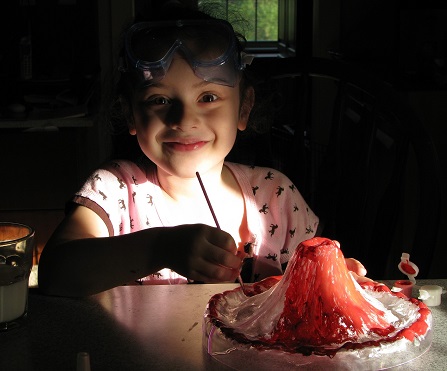Tiffany’s recent post on tinkering inspired me to look further into the benefits of hands-on learning. When researching, I found several studies noting various benefits of hands-on experiments in the classroom, from learning teamwork to increased engagement for tactile learners. By far the most prominent, however, was the effect hands-on learning has on memory.
An article published by PBS regarding hands-on learning in math noted:
“The more avenues there are to receive data through the senses, the more connections the brain can make. The more connections that are made, the better a learner can understand a new idea. This holds not only for primary age learners, but through adulthood. All students need to approach the learning of mathematics by actively doing mathematics.”
Examples included physically measuring objects, collecting data and handling geometric objects at all stages. Experiencing lessons beyond paper or lectures deepens students’ understanding of a concept and serves those who are more tactile learners.
In fact, a University of Chicago study found notable differences in brain function between those who physically experienced math and science concepts. When thinking about concepts during a test, hands-on students had a higher rate of activity in the sensory and motor-related parts of their brain, leading to better memory.
These methods don’t just hold true for college students. Eighth-graders in a Purdue University study who were assigned to build a water purification device in their science class scored an average of 20% higher on the unit test than those taught simply through lectures and text-book readings. The hands-on students worked in groups of three or four to engineer a water-purification device while the teacher walked around the classroom discussing the scientific principles of water-purification and asking individual groups questions about the principles behind their device. Once completed, students tested their devices using water from a local river to see if it had become drinkable.
While none of this research serves as impetus to drop the traditional methods of classroom instruction (students do, in fact, need to learn the fundamentals of a material before starting hands-on projects), it does give solid evidence of the benefits of mixing hands-on learning into traditional classroom learning. Integrating hands-on activities and experiments into classroom instruction helps students remember concepts and perform better on tests, in addition to aiding in long-term retention of the material. Perhaps it may also strike up an interest in science or math that a student would not otherwise realize.

